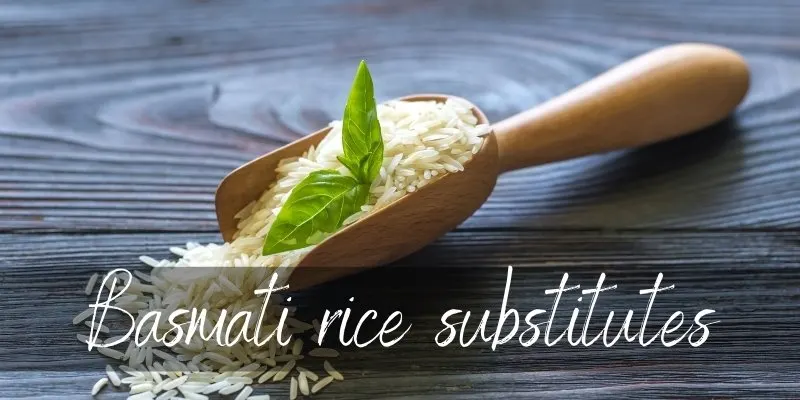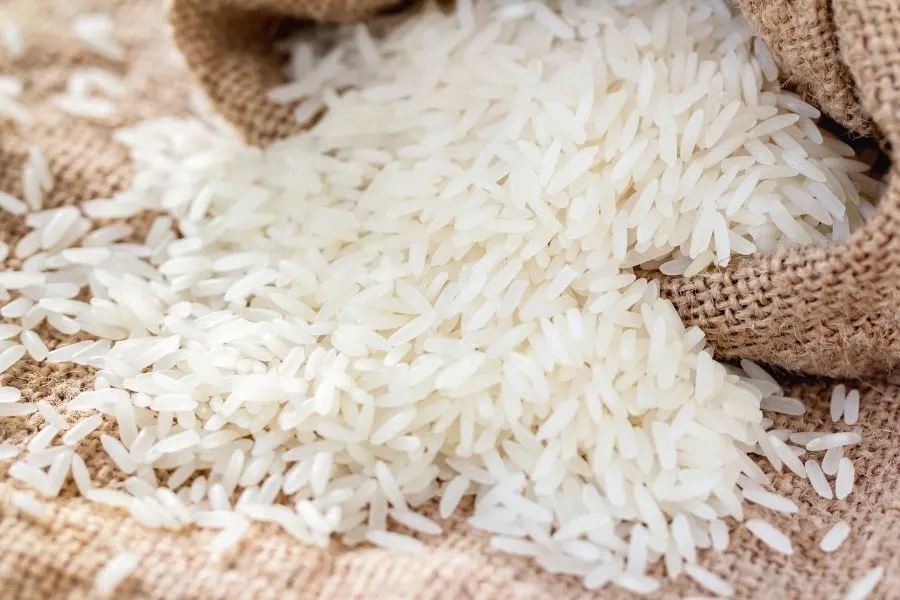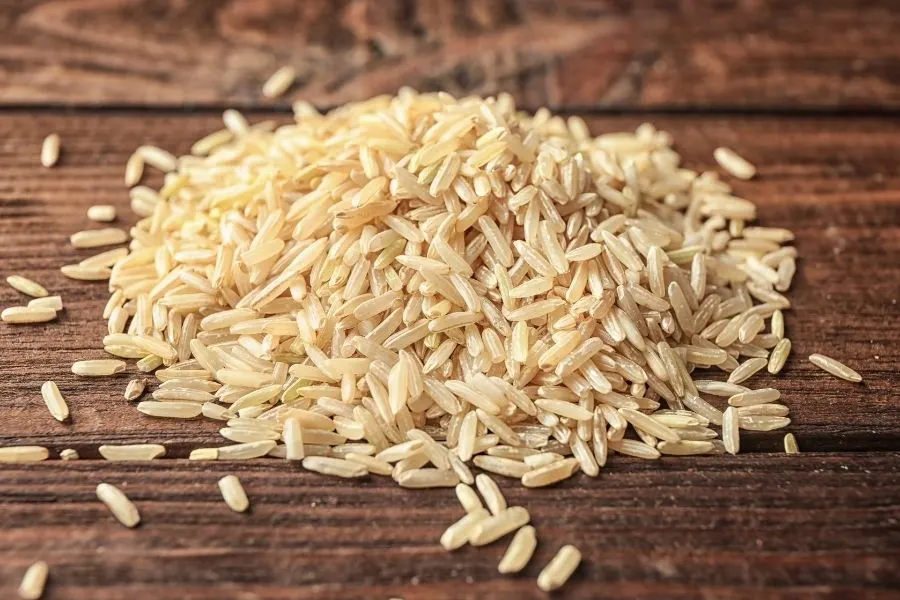Basmati rice may be the most flavorful, most delicious rice out there. It’s a common ingredient in Indian cuisine, but you can use it in pretty much any recipe you like.
But what if you don’t have any basmati on hand ? Replicating the flavor and texture wouldn’t be very easy, but there are substitutes. Yes, you can find basmati stand-ins and they work just fine.

Best basmati substitutes
The best basmati substitutes are jasmine rice, long grain white rice, and long grain brown rice. Jasmine is the most fragrant of the substitutes, but it will serve you the best.
The region that grows basmati rice grows many other rice varieties that have some of the other traits of basmati, or all the traits of basmati but in a milder and less privileged form, or variants that do not qualify to be full-fledged basmati.
To know these rice varieties, you will have to do some due diligence in the local markets. These basmati alternatives are not much popular beyond the region they are grown. Except for jasmine, which is as common as basmati.
However, you don’t need to be disappointed. There are some basmati rice substitutes that you can easily find in your supermarket. These are not as celebrated as basmati rice, but they do the job nonetheless.
Here are some of the top basmati alternatives that you can easily find in a grocery shop near your home.
Read Also:What Is Rice Pilaf ?
Jasmine rice
Basmati means ‘full of fragrance’, which explains why jasmine rice is at the top of the basmati substitute. Yes, jasmine rice is full of fragrance and aroma when cooked.
There is a difference in the kind of aroma the two rice varieties have. While basmati is regal in its nutty aroma, jasmine rice is sweeter and milder.
In terms of looks, jasmine rice is smaller in size, more white than translucent as basmati is, and has a round edge compared to the sharp edge of the basmati rice.
Jasmine rice does not grow as big as basmati rice after cooking. But it does have the fragrance and a personality of its own.
It’s primarily grown in Thailand, which is a major rice producer and exporter. Jasmine rice is popular in Thai, Indonesian, Malaysian, and Taiwanese cuisines. You may also know it as Thai rice.

Long-grain white rice
Long-grain white rice is grown in America as well as in all major rice producing countries. As the name suggests, it’s long grain and white rice, something that basmati rice is.
Compared to basmati rice, what long grain white rice does not have is the latter’s fragrance. Since it’s long grain, the size and the dry texture after cooking are not hard to get close to the basmati rice.
The flavor that’s missing can be compensated by adding some other flavor to your menu. We recommend peanuts, roasted almonds, parmesan, or nutritional yeast.
Long-grain brown rice
Both basmati rice and jasmine rice have brown variants. They are unpolished rice, and they have more fiber and have a better nutrition profile.
If you can’t find basmati rice for some reason, you can use these two rice varieties. They have the same fragrance and other properties as their white counterpart.
Just remember, the brown jasmine rice tends to become sticky and clumpy after cooking. You can also find long-grain brown rice, a brown counterpart of long-grain white rice.
Its qualities are similar to its white counterpart. But the brown variant would have more fiber, protein, and other nutrients. Brown rice is always a healthier option.

Popcorn rice
It’s a hybrid variant of Basmati rice grown in Louisiana. It has the same nutty, floral fragrance, and fluffy profile after cooking.
Its fragrance is milder than that of basmati rice. But except for that, it is as good as basmati rice. It’s also known as Louisiana pecan or wild pecan rice. It’s a perfect basmati rice substitute.
Texmati rice
This again is a hybrid variety of basmati rice grown in Texas. It has the fluffy character and also the aroma of basmati rice. This rice is particularly very popular in the US because it acts as a perfect basmati rice substitute.
Know your basmati better
There are many types of rice grown across Asia and other parts of the world. Many of them have the aroma and some of the qualities that you associate with basmati.
To know the entire range of basmati substitutes that may be available near you, you should know the exact qualities that basmati rice has.
What makes basmati such a popular rice variety?
Basmati rice is primarily grown in the clean and salubrious foothills of the Himalayas. This is a region that witnesses heavy rainfall during the rainy monsoon season.
For as long as the basmati rice crop is standing in the field after transplantation, the paddy field is virtually inundated. In that kind of climate, the basmati rice grows.
Physical attributes of basmati rice
It’s conspicuous by its size, slenderness, and sharpness at the edges if you look at it.
When cooked, it doubles in size. It’s fluffy and dry, meaning it’s not sticky, it’s not clumpy, and each grain of basmati is separate.
But the prize that comes home with basmati is none of these qualities. Its strong floral aroma transcends walls, and even your neighbor gets to know what you are cooking.
Because of these qualities, basmati is a staple in important, special, and ceremonial occasions.
It’s relished in a wide variety of dishes in India and Pakistan, where it is primarily grown and in the Middle-East, which has been traditionally fond of basmati rice. But now even in America, basmati rice is hugely popular and can be found in all well-stocked supermarkets.
Read Also:Should You Wash Rice Before Cooking ?
Final thoughts
Basmati rice is very popular across the United States, as it is elsewhere in the world. It’s particularly used in special dishes and on special occasions.
The rice has an enigmatic aroma profile that’s hard to find in other rice varieties. Apart from that, it grows markedly big after cooking. And, it has a dry fluffy character that makes every grain separate from the other.
What if you run out of stock? This article deals with what other rice varieties you can use as a basmati rice substitute.
These are those rice varieties that can be easily found in grocery stores across the United States. So, you should have no difficulty cooking your favorite dishes even if you have run out of basmati rice.

